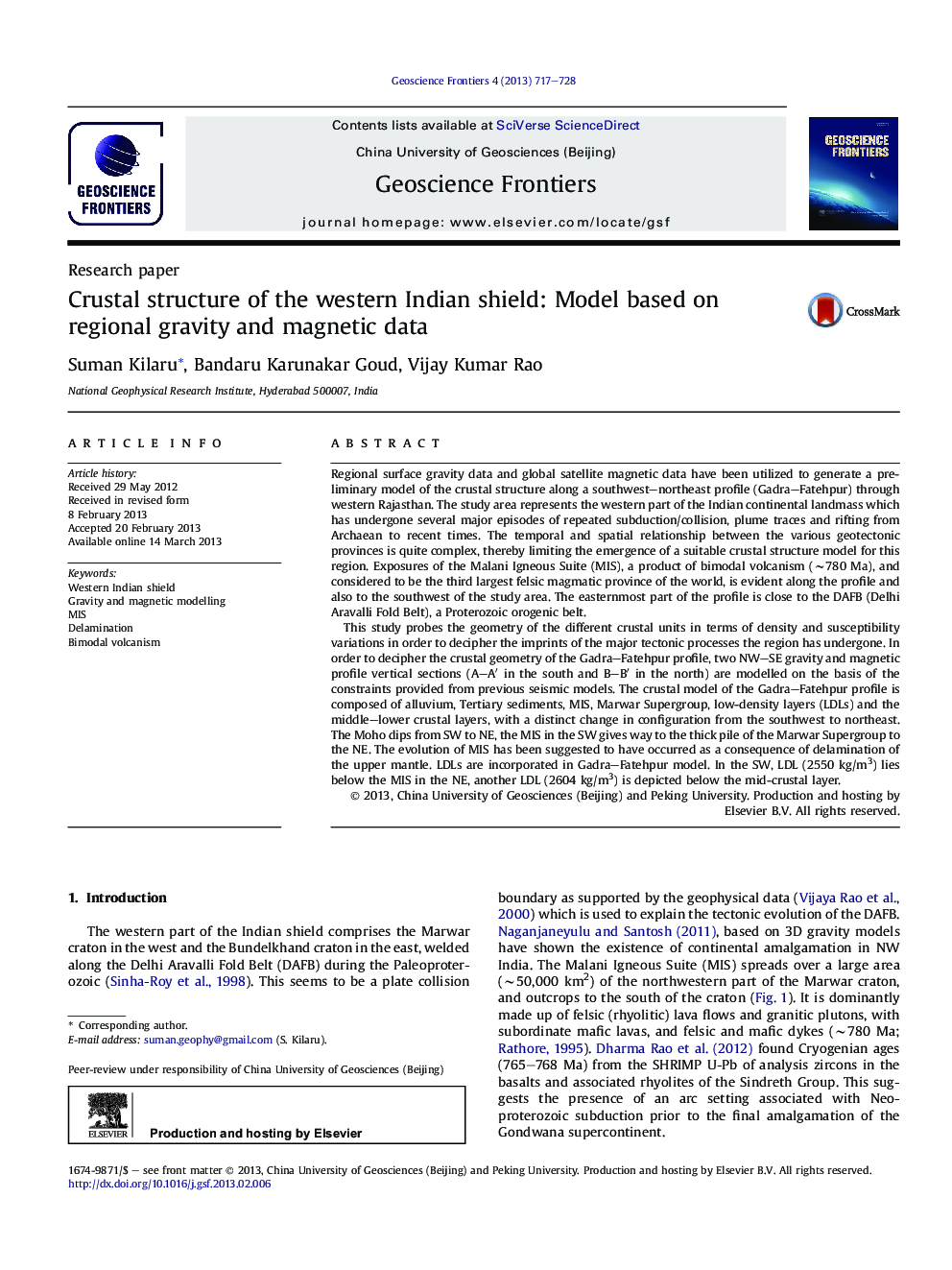| کد مقاله | کد نشریه | سال انتشار | مقاله انگلیسی | نسخه تمام متن |
|---|---|---|---|---|
| 4681653 | 1348864 | 2013 | 12 صفحه PDF | دانلود رایگان |
• Gravity and magnetic modelling to study evolution since Proterozoic with exposures of volcanism.
• Delamination and plume tectonics alters Precambrian crust during Precambrian–Mesozoic.
• Density inhomogeneity in crust is responsible for the changes of lineaments pattern.
Regional surface gravity data and global satellite magnetic data have been utilized to generate a preliminary model of the crustal structure along a southwest–northeast profile (Gadra–Fatehpur) through western Rajasthan. The study area represents the western part of the Indian continental landmass which has undergone several major episodes of repeated subduction/collision, plume traces and rifting from Archaean to recent times. The temporal and spatial relationship between the various geotectonic provinces is quite complex, thereby limiting the emergence of a suitable crustal structure model for this region. Exposures of the Malani Igneous Suite (MIS), a product of bimodal volcanism (∼780 Ma), and considered to be the third largest felsic magmatic province of the world, is evident along the profile and also to the southwest of the study area. The easternmost part of the profile is close to the DAFB (Delhi Aravalli Fold Belt), a Proterozoic orogenic belt.This study probes the geometry of the different crustal units in terms of density and susceptibility variations in order to decipher the imprints of the major tectonic processes the region has undergone. In order to decipher the crustal geometry of the Gadra–Fatehpur profile, two NW–SE gravity and magnetic profile vertical sections (A–A′ in the south and B–B′ in the north) are modelled on the basis of the constraints provided from previous seismic models. The crustal model of the Gadra–Fatehpur profile is composed of alluvium, Tertiary sediments, MIS, Marwar Supergroup, low-density layers (LDLs) and the middle–lower crustal layers, with a distinct change in configuration from the southwest to northeast. The Moho dips from SW to NE, the MIS in the SW gives way to the thick pile of the Marwar Supergroup to the NE. The evolution of MIS has been suggested to have occurred as a consequence of delamination of the upper mantle. LDLs are incorporated in Gadra–Fatehpur model. In the SW, LDL (2550 kg/m3) lies below the MIS in the NE, another LDL (2604 kg/m3) is depicted below the mid-crustal layer.
Figure optionsDownload as PowerPoint slide
Journal: Geoscience Frontiers - Volume 4, Issue 6, November 2013, Pages 717–728
